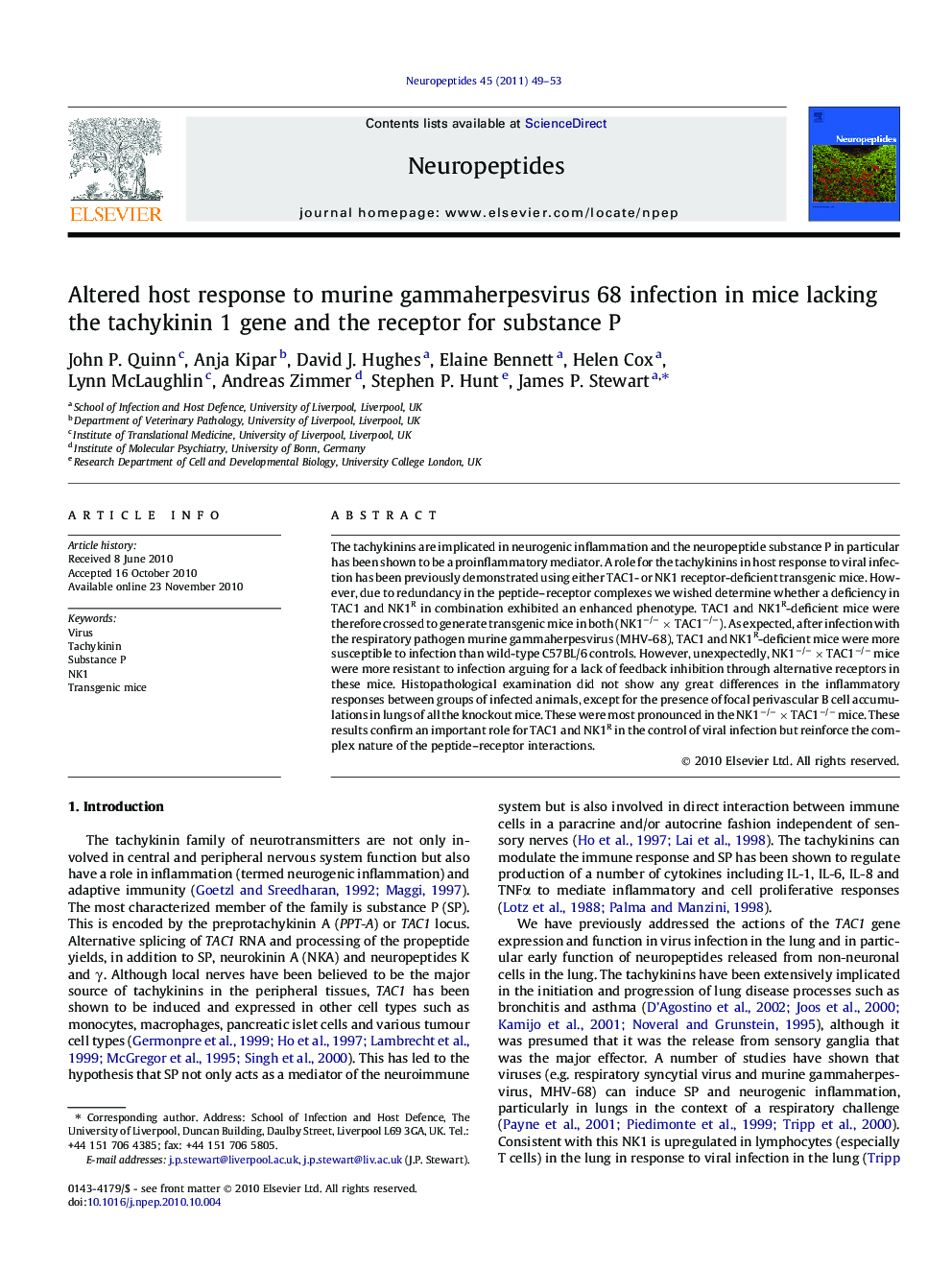| Article ID | Journal | Published Year | Pages | File Type |
|---|---|---|---|---|
| 2808494 | Neuropeptides | 2011 | 5 Pages |
The tachykinins are implicated in neurogenic inflammation and the neuropeptide substance P in particular has been shown to be a proinflammatory mediator. A role for the tachykinins in host response to viral infection has been previously demonstrated using either TAC1- or NK1 receptor-deficient transgenic mice. However, due to redundancy in the peptide–receptor complexes we wished determine whether a deficiency in TAC1 and NK1R in combination exhibited an enhanced phenotype. TAC1 and NK1R-deficient mice were therefore crossed to generate transgenic mice in both (NK1−/− × TAC1−/−). As expected, after infection with the respiratory pathogen murine gammaherpesvirus (MHV-68), TAC1 and NK1R-deficient mice were more susceptible to infection than wild-type C57BL/6 controls. However, unexpectedly, NK1−/− × TAC1−/− mice were more resistant to infection arguing for a lack of feedback inhibition through alternative receptors in these mice. Histopathological examination did not show any great differences in the inflammatory responses between groups of infected animals, except for the presence of focal perivascular B cell accumulations in lungs of all the knockout mice. These were most pronounced in the NK1−/− × TAC1−/− mice. These results confirm an important role for TAC1 and NK1R in the control of viral infection but reinforce the complex nature of the peptide–receptor interactions.
